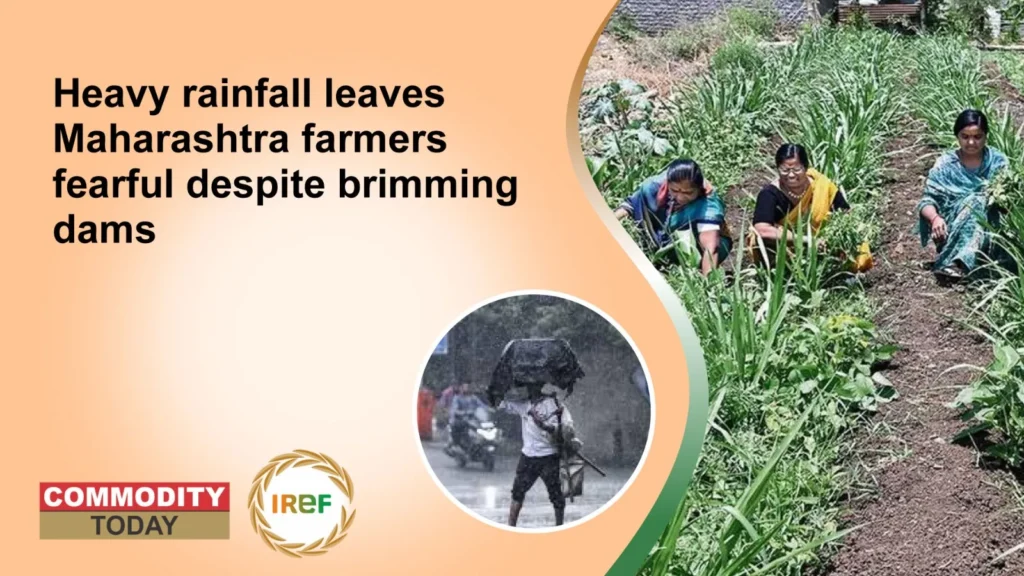Maharashtra Farmers are fearful these days as heavy rainfall leaves the dam nearly full, but Kharif crops are submerged. The State Water Resources Department stated that as of September 18, 138 major projects hold 95.64 per cent live storage, compared with 94.43 per cent last year. Medium projects (260) stand at 79.86 per cent, up from 69.30 per cent, whereas the 2,599 minor projects have 60.92 per cent storage against 47.94 per cent a year earlier.
Impact of Heavy Rainfall on Maharashtra Farmers
In August and September, heavy rainfall has affected around 17.85 lakh hectares in the 30 districts, with Kharif crops such as soybean, maize, cotton, urad, tur, and moong worst hit. In addition, vegetables, fruits, bajra, sugarcane, onion, jowar, and turmeric have also suffered, leaving Maharashtra Farmers despondent. However, Agriculture Minister Dattatray Bharane stated that the government has begun relief measures and promised compensation.
In the western area, Maharashtra farmers fear that incessant rains and dam discharges will affect sugarcane and other crops. In Kolhapur, Sangli, and Satara, Farmers have already lost fields to overflowing waters. Moreover, Heavy rainfall has also led to the leaching of essential nutrients and topsoil erosion, reducing soil fertility.
What did the Farmer leader say after visiting flood-hit areas amid heavy rainfall?
After visiting flood-hit areas, the farmer leader Anil Ghanwat said backwaters from dams have devastated crops, and more rainfall could increase the losses. Adding that Jalyukta Shivar (the government’s water conservation project) works were done in command areas, not catchments and had nothing to do with the filled dams or flooding. Moreover, he asked the authorities to provide immediate compensation for affected farmers.



